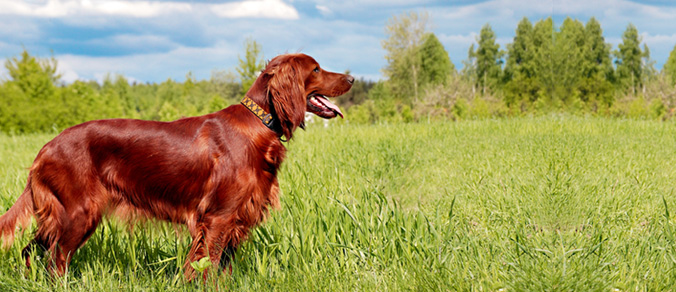WHAT SHOULD I BE FEEDING? WHAT IS GOOD TO FEED AND WHAT IS NOT?
Posted by Landywoods on 23rd Nov 2019
So, you have decided to feed your pet a raw diet (BARF - biologically appropriate raw feeding). But, it appears to be a minefield of rights and wrongs. Your right way will take a bit of time, effort and trial and error. Remember every pet is different and what suits on may not suit another. Just like humans they have likes and dislikes. This article will help you to determine what is a healthy, balanced diet. But, please remember these are guidelines and may need a tweak here and there to suit your pet.

Where to begin...
Once you start researching the best diet for your pet you will see phrases like 'complete' 'balanced' or '80/10/10'. You may wonder what these mean.
Complete - this is a perceived industry standard. Guidelines have been produced to which all manufacturers should work to, incorporating the 80/10/10 (80% meat, 10% bone and 10% offal). Always read the label, every manufacturer has their own take on this and some products may not contain what you expect (no bone or no offal). Whilst this isn't a problem if you are aware, it is something to watch out for. You can balance over time using other products that do contain bone or offal.
Balanced - again this is a perceived industry standard. One size doesn't fit all in this case.
80/10/10 - This is the ideal, balanced diet. 80% protein (muscle meat), 10% bone and 10% offal of which only 5% should be liver. Other offal such as kidney or spleen should make up the other 5%.

What foods are suitable.....
Here we would like to give a brief overview of what is considered suitable foods. It is not an exhaustive list but the basics. We will explain why these are needed in a balanced diet.
PROTEIN: (Muscle building – Amino acids – Real food for the carnivore) FEED THESE RAW. Cooked meat is alien to the dogs digestive system!
RAW GREEN TRIPE: Probably the finest of the protein foods. Try to obtain a quality supply.
CHICKEN: Wings, carcass, necks or meat.
LAMB: Meat or neck.
BEEF: Any cut is fine. Try to avoid the large weight bearing leg bones - these aren't great for teeth as they are so hard.
TURKEY: Carcass; necks; meat.
OFFAL: Liver (only 5% of your calculated offal amount) Kidney. Spleen, testicles are also a good alternative offal.
HEART / PLUCK: These are muscle meats too. Heart and small amount of lights / pluck (lungs)(often found in cheaper pet food minces as ‘bulk’ i.e. economy pet minces.) These are cheap but can also be very rich so try to avoid feeding these for the whole meal.
FISH: Oily fish; herring/mackerel etc; white fish.
EGGS: Ideally raw to preserve the biotin content. These can be feed whole with the shell or without.
BONES: You cannot get away from the fact that dogs are primarily carnivores and carnivores eat bones. Bones are a food and packed with nutrition. Dogs have eaten them with very little harm since forever! That was what they were created for – they cleared up all the carcasses and lots of other things – literally, the dog is a scavenger.
Where better for a dog to get totally natural, easily assimilated, top quality calcium! They form an important part of a balanced diet and also are great for sparkly white teeth.
VEGETABLES: These are purely optional. Some do, some don't. They can be useful for bulking out a meal if you pet needs to loose a few pounds.But is you choose not to feed or your dog isn't keen then don't worry you will still be achieving a balanced diet if you feed the items above.
Give vegetables with a Protein meal. You can give them finely grated raw, or pulped. Or you can cook them - or use the leftover veg from your Sunday Roast. Many manufacturers will include them in their completes also.
SPROUTED GRAINS/SEEDS (i.e. pumpkin/sunflower/alfalfa/ or use beansprouts) Only need to let them just sprout, about 12 to 18 hours should see it right. Trouble is, it’s another bother to do it. If using seeds, you can also grind them, instead of sprouting.
FRUIT: Yes, fruit. Give bananas, an excellent source of potassium and long term energy. Remember the sugar content though. Also some dogs with skin problems can have an issue with the sugars in fruit and veg and this might make them sore and itchy. Feed occasionally as a treat and not as an integral part of the diet.
Apples, you can grate at first for a pup, and is often best that way for all dogs, as they tend to get more from it. You can find that if they have eaten a whole apple, it comes out the back end in un-broken down chunks. If they have a really strong digestive system they will break more of it down.
Kiwis are good – full of vitamin C.
Oranges; dogs love them as long as you get them used to them early on in life. Again, great vitamin C.
SUPPLEMENTS: Again, if you are feeding a good balanced diet, these are a preference rather than a necessity. Seaweed (Kelp). Is a brilliant vitamin and mineral source. Tumeric - a great natural anti inflammatory. Kefir, coconut oil - the list goes on. Please research feeding guidelines and introduce gradually, as with all new foods.

Current feeding guidelines suggest that for a balanced diet you should be offering a good variety of proteins (Minimum of 4 per week). Variety is the spice of life - your dog will thank you for having something new each day rather than having the same protein and becoming bored.
